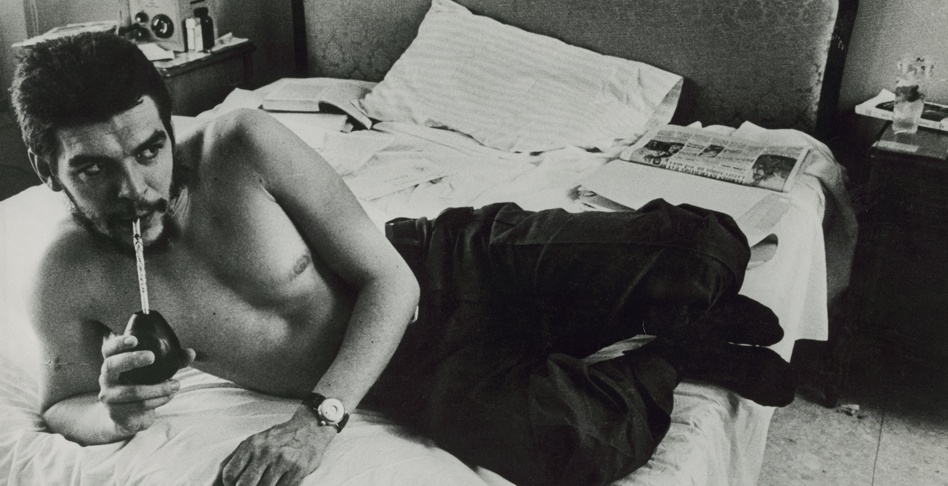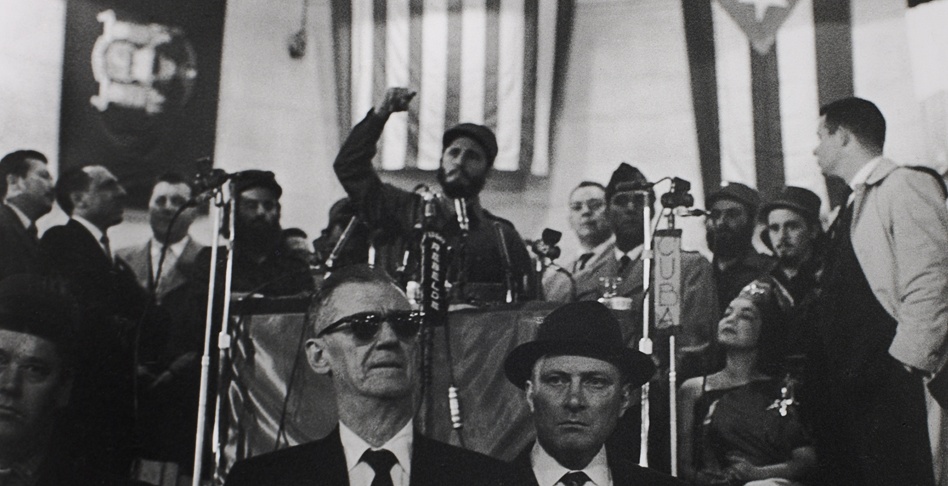Cuba in Revolution opens at Garage Center for
Contemporary Culture on 11 March 2011, with over 250 original photographs that
explore the visual legacy of the Cuban Revolution of 1959. The exhibition
features works from over thirty photographers from Cuba, the United States and
the USSR, and gives a unique insight into one of the most spectacular political
events of the twentieth century.
Cuba in Revolution explores everyday life in Cuba before and after the
Revolution, and considers the ways in which both Cuban and foreign
photojournalists helped construct the image of the Revolution for the rest of
the world. The exhibition shows the tremendous influence of photography in
recording and also encouraging the revolutionary movement in Cuba. It includes
important images of pre-Revolutionary Cuba by Constantino Arias, Raúl Corrales,
René Burri, Burt Glinn and classics by Henri Cartier-Bresson. Two of the most
iconic prints are by Alberto Korda, his 1959 portrait La Niña de la Muñeca
de Palo (Girl with a Wooden Doll) and his seminal portrait of Che Guevara
titled Guerrillero Heroico (Heroic Guerrilla) from 1960. Also included
are a series of never-before-seen images of Che’s death in Bolivia in 1967 by
the British photojournalist Brian Moser.
The exhibition also presents the development of Cuban photography, as it
positions the work of the most prominent indigenous photographers (Arias,
Korda, Corrales and Salas), alongside international photographers and
photojournalists (such as Cartier-Bresson, Burri, Glinn, Elliott Erwitt and
Andrew Saint-George). Cuban photographer Arias injected a degree of social and
political consciousness into his work of the early 1950s, and in many ways,
this presaged the concerns of the Revolution by focusing attention on the
everyday reality of the common man.
During the Revolution, an ‘ideal’ was transposed onto the image of the Cuban
people, and later this was fused with iconic or even mythological images of the
Revolutionary leaders themselves. Indeed, initially both Cuban and
international photographers had unprecedented access to Fidel Castro and his
young Communist guerillas, and many of the photographs that were taken at this
time capture the spontaneity of the Revolution. The exhibition also reveals
insights such as the rarely seen photographs of 1960s teenage Cuban
counterculture that existed clandestinely alongside the sanctioned youth
movements of the Revolution. In contrast, after 1968 and the banning of private
enterprise inside Cuba, the majority of authorized photographs of the
Revolution are reduced to portraits of Castro in his official capacity as head
of the Cuban State.
The exhibition has been curated by Mark Sanders and Yulia Aksenova from images
held in the collection of The Arpad A. Busson Foundation. A version of Cuba
in Revolution was first exhibited at The International Center of
Photography in New York in September 2010.
Artists include
Walker Evans,Raúl Corrales,José Tabio Palma,Constantino
Arias,Andrew St. George,Tirso Martinez,Burt Glinn,Ernesto Fernandez,Luís
Korda,Flip Schulke,Osvaldo & Roberto Salas,Henri Cartier-Bresson,Bob
Henriques,Venancio Diaz,José Agraz Solans,Sérgio Canales,Alberto Korda,Dmitri
Baltermants,Lee Lockwood,Elliot Erwitt,Liborio Noval,René Burri,Aldo,José
Figueroa,Brian Moser,Freddy Alborta Trigo


